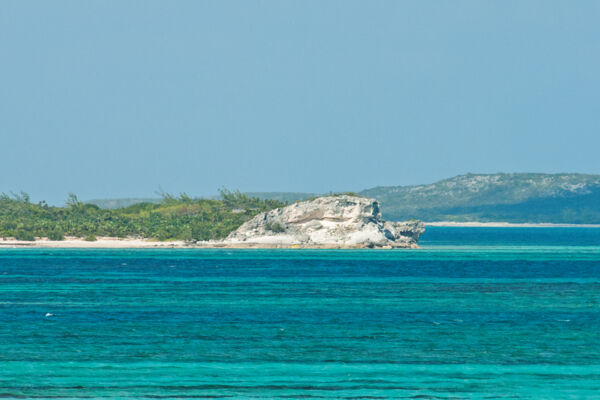Middle Creek Cay Turks and Caicos

Middle Creek Cay is a small uninhabited cay, located on the windward edge of the Caicos Islands Archipelago between South Caicos and East Caicos, and adjacent to Plandon Cay and McCartney Cay.
Although a bit weather-beaten due to being exposed to the eastern trade winds and the Turks Islands Passage, Middle Creek Cay is quite scenic, with quite a varied coastline. Much of the island’s eastern coast is beach, with the southern and northern ends transitioning into crumbling limestone cliffs. A ridge follows the eastern beach, and the heights of this ridge support dense salt-resistant vegetation. Much of the sheltered western side of the cay is red mangrove coast, with a few hidden beaches with silty sand.
Middle Creek Cay has a total land mass of about 105 acres (42.5 hectares), and a peak of about 30-35 feet (9-11 meters) on the cay’s northern bluff. Like many of the undisturbed islands in the Turks and Caicos, evidence of the pre-Columbian Lucayan peoples can still be seen, including ceramics, and the cay may have been used as a fishing and gathering site.
Wildlife
One of the most fascinating features of Middle Creek Cay is the diversity and quantity of marine wildlife in the channels and water surrounding the cay, especially in regard to sharks and predatory fish. Another remarkable marine feature is the seagrass beds that line the channel between Middle Creek Cay and McCartney Cay, which is one of the lushest examples in the Turks and Caicos.
Bird sightings near Middle Creek Cay can also be exceptional, and it’s common to see numbers of ospreys, brown pelicans, frigatebirds, and a wide array of smaller coastal and tropical dry forest birds, herons, egrets, and ducks.
Sargassum
Like many of the windward islands and coasts, Middle Creek Cay can experience significant accumulations of sargassum seaweed at times, especially during the later summer months. It’s not well-known how the sargassum affects the environment in such as system. Some species definitely appear to be impacted more than others, such as eels, which can die off in numbers. In any case, after the sargassum dissipates, wildlife sightings in the area are typically excellent.
